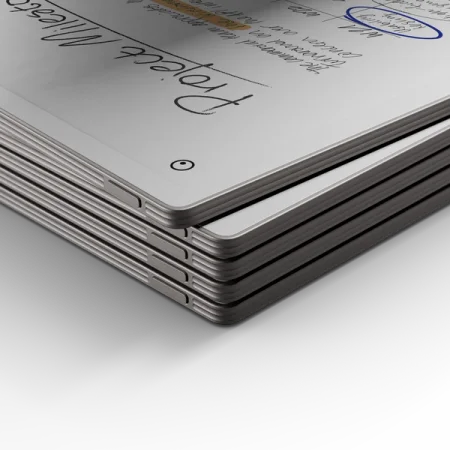Inside reMarkable
The work continues
Working on reducing our environmental impact doesn’t have a start or end date.

We’re constantly reviewing our processes and results, and using data to inform our ongoing work. The information presented here comes from mapping conducted by sustainability consultancy firm CEMAsys in 2023 and 2024, using the GHG Protocol and ISO 14040:2006 as points of reference. For more information on how we work with emissions mapping, visit our meaningful mapping section.
We think being open about emissions as a technology company isn’t just about publishing information, it’s also about presenting it in an easy to understand way so it has practical use. Keeping the above in mind, we’ve tried to add as much context as we can to our emissions numbers.

The carbon footprint of each reMarkable Paper Pro is 58 kg of CO2. For perspective, the latest 13” iPads (2024) generate 168 kg of baseline CO2 emissions.
Similar to reMarkable 2 production, much of the emissions stem from electricity used in the supply chain production process (82%). To work towards combating this, for reMarkable Paper Pro and Type Folio (both versions), the assembly manufacturing process now leans more on renewable energy, with 19% and 10% contributions respectively. This progress has come in large part due to our fantastic supply chain partners and our ongoing collaborative efforts. Going forward we’re excited about growing the share of renewable energy used in our supply chain.
Diving deeper, we can see other contributors like transport (16%), usage (1.8%), and end of life (0.2%) also play a role. At the component level, production of the PCBA and the display are the two biggest factors, responsible for 37% of production emissions each.
Our work on detailed emissions mapping has also expanded into our accessories collection, and a detailed breakdown of emissions numbers for reMarkable Paper Pro accessories can be found here. One of the obvious findings from the accessory emissions numbers is the extra cost related to the leather folios. From a customer experience standpoint, we haven’t been able to find alternative materials that meet the same demands, but it’s something we’re committed to keep pursuing.
At reMarkable, we’re serious about leading the way when it comes to transparency in the technology industry. We think a more open technology industry is a more sustainable one, so we’re eager to make sure everyone has the information they need.
Please direct any further questions or feedback through our feedback page. We’re looking forward to continuing the sustainability discussion with you.


